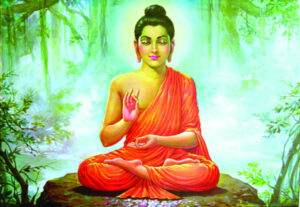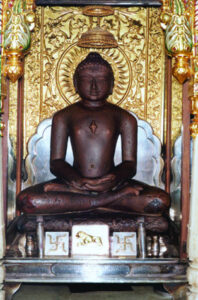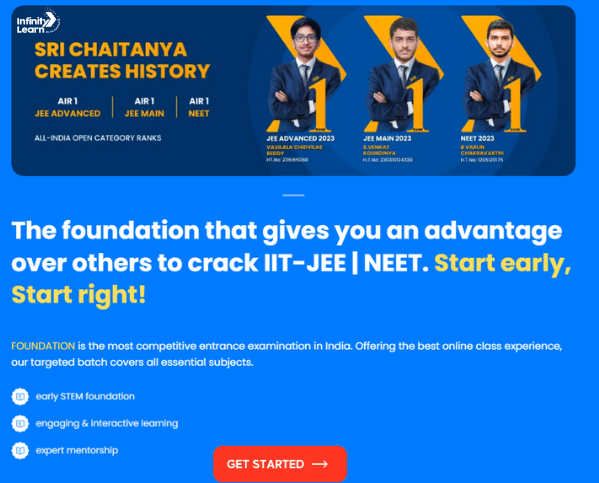New Questions and Ideas – NCERT Solutions for Class 6 Social Science Chapter 7 – Free PDF Download
For pupils, primary education is critical in laying the groundwork for higher education. The CBSE curriculum is designed to broaden students’ understanding and make it easier for them to clear their foundation. Students can assess their progress through examinations in addition to mastering the subjects. NCERT Solutions Class 6 History Chapter 7 is provided by INFINITY LEARN and is of the greatest importance to students. NCERT Solutions Class 6 History Chapter 7 is answered by subject experts and is of utmost relevance to students. Students can also get solutions to other disciplines without difficulty. Class 6 History NCERT Solutions Chapter 7: New Questions and Ideas from the Past is available as a free PDF download. Science, Maths, English, and Hindi would become easier to study if you have access to NCERT Solutions for Class 6 Science, Maths, and other topical solutions. You can also get NCERT Solutions for Class 6 Maths to help you revise the entire syllabus and improve your exam scores.
Class 6 HOTS Course
The Class 6 HOTS Course is designed to boost students’ critical thinking and analytical skills. Through innovative activities and challenging exercises, this course helps students develop a deeper understanding of concepts, ensuring they excel academically. With a focus on higher-order thinking, the Class 6 HOTS Course prepares students for future academic challenges by enhancing their problem-solving abilities.
I. Answer the following:
1. Describe the ways in which the Buddha tried to spread his message to the people.
A. Buddha tried to spread his message to the people in the following ways:

i. Buddha taught in the language of the people, Prakrit, so that everyone could understand his message.
ii. He spent his life travelling on foot, going from place to place, teaching people, till he passed away at Kusinara.
iii. He also encouraged people to think for themselves, rather to simply accept what he said.
2. Write whether true or false:
(a) The Buddha encouraged animal sacrifices.
(b) Sarnath is important because it was the place where the Buddha taught for the first time.
(c) The Buddha taught that karma has no effect on our lives.
(d) The Buddha attained enlightenment at Bodh Gaya.
(e) Upanishadic thinkers believed that the atman and brahman were ultimately one.
Solution:
(a) False: Buddha professed kindness for animals. He discouraged the practice of sacrificing animals.
(b) True: Sarnath is where Buddha taught for the first time after enlightenment. He attained enlightenment at Bodh Gaya.
(c) False: Karma means action or the work we do. Buddha believed that Karma affects our current and next lives.
(d) True: Buddha did meditation for several days under a Peepal (Banyan) tree in Bodh Gaya, where he attained enlightenment.
(e) True: Atman means individual soul, whereas Brahman means universal soul. Those who follow the Upanishads believed that Atman and Brahman were the same.
3. What were the questions that Upanishad thinkers wanted to answer?
A. The questions which Upanishad thinkers wanted to answer:

i. They wanted to know about life after death.
ii. They wanted to know why sacrifices should be performed.
iii. Is there something permanent in the Universe, which lasts even after death? They described this as ‘atman’ or individual soul.
iv. They believed that ultimately both the Atman and the Brahman were one.
4. What were the main teachings of the Mahavira?
A. The main teaching of Mahavira are:
i. He taught a simple doctrine, men and women who wished to know the truth must leave their homes.
ii. They must strictly follow the rules of ahimsa, which means not hurting or killing living beings.
iii. Lead a simple life.
5. Why do you think Anagha’s mother wanted her to know the story of the Buddha?
A. Anagha’s mother wanted her to know about the story of Buddha because she was going on a school trip to Varanasi. Varanasi and Sarnath, are closely related to the life of Buddha. It would have enriched her knowledge about one of the greatest teachers and preachers of ancient times.
6. Do you think it would have been easy for slaves to join the sangha? Give reasons for your answer.
A. Those who wanted to join the sangha had to take permission from their parents or their masters. The masters would not give permission easily, because slaves worked very hard and did not get wages. So it was difficult for the slaves to join the sangha.
7. Make a list of at least five ideas and questions mentioned in this lesson. Choose three from the list and discuss why you think they are important even today.
A. The Ideas and questions mentioned in the chapter are the following:
Questions:
i. Is there a life after death?
ii. What was Buddha trying to teach Kisagotami?
iii. How did the beggar convince sages to share food with them?
Ideas:
iv. One should follow the principle of ahimsa.
v. One should renounce worldly pleasure in search of the truth.
8. Find out more about men and women who renounce the world today. Where do they live, what kinds of clothes do they wear, what do they eat? Why do they renounce the world?
A. Mother Teresa is one of them, she was poor and lived in a cottage in Gujarat, they wear simple Saree of white colour and eat seant and simple food. They renounced the world by helping children.
NCERT Solutions For Social Science History Chapter 7
NCERT Solutions For Class 6 Social Science History Chapter 7 NCERT Solutions For Class 6 Social Science History Chapter 7 NCERT Downloading INFINITY LEARN NCERT Solutions for Class 6 History Chapter 7 will assist you in finding answers to all of the questions that have been curated by subject experts. The answers are provided from the perspective of an exam, which benefits students by allowing them to practice writing responses. Simply memorizing the answers will not help students in the long run; they must understand the fundamental concepts of Class 6 History. Class 6 History Chapter 7 PDF not only contains the content but also ensures that pupils have a good understanding of the chapter when revising.
Chapter 7 of History for Class 6 – New Questions and Ideas
Students learn about how kings in the Mahajan padas obtained more authority in Class 6 History Chapter 7 – New Questions and Ideas. They’ll also learn how Buddha and Mahavira acquired enlightenment and disseminated their teachings during this time period. New cities were being built, and rural life was transforming.
Buddha’s life story: Siddhartha Gautama, the Buddha’s founder, was born roughly 2500 years ago. The Buddha was a Kshatriya who came from a little gana. He got enlightenment after days of meditation at Bodh Gaya. He spent the remainder of his life teaching people and traveling on foot.
Jainism:
- The last Tirthankara of Jains was Vardhamana Mahavira.
- He attained enlightenment after 12 years of a hard and lonely life.
- Followers of Mahavira were asked to lead a simple life.
- Jainism was mainly followed by traders.
The Sangha:
- Association of people who left their homes.
- Vinaya Pitaka was a book where all rules were written down.
- They were also known as Bhikkus and Bhikkhunis.
- The sangha includes brahmins, Kshatriyas, merchants, labourers, and slaves.
Jainism:
- Vardhamana Mahavira was the Jains’ last Tirthankara.
- After a difficult and lonely life of 12 years, he gained enlightenment.
- Mahavira’s followers were instructed to live a modest existence.
- Traders were the principal adherents of Jainism.
- The Sangha is a Buddhist order.
- A group of persons who have left their houses.
- The Vinaya Pitaka was a book that contained all of the regulations.
- Bhikkhus and Bhikkhunis were other names for them.
- Brahmins, Kshatriyas, merchants, labourers, and slaves are all members of the sangha.
Monasteries:
- This was the permanent shelter in which monasteries or viharas were built.
- Wood was used to construct the first viharas.
- They lived in caverns in western India.
- Buddhism flourished over the Indian subcontinent and beyond over the millennia.
Why is INFINITY LEARN the most popular among students?
History is frequently regarded as a dry topic. Understanding the fundamentals and learning through the use of good flow chart principles makes the subject much easier to grasp. Students should not rely solely on memorizing answers provided by topic experts. This is where INFINITY LEARN comes in to help pupils grasp the subject on their own. The following are some of the main reasons why students prefer INFINITY LEARN:
- Experts in the field create the subject notes.
- All of Chapter 7 Class 6 History’s major subjects are covered.
- The notes are useful for getting a quick overview during revision.
- Subject specialists explain topics in layman’s terms to make them understandable.
Frequently Asked Questions (FAQs)
- Why should you use NCERT Solutions for History Chapter 7 in Class 6?
- What are the new ideas and questions that Class 6 is teaching us?
- Is the information in the INFINITY LEARN NCERT Solutions for Chapter 7 of Class 6 History accurate for board exam preparation?
- Can the INFINITY LEARN NCERT Solutions for Chapter 7 of Class 6 History help students to fetch good marks in the board exam?
- According to Chapter 7 of Class 6 History, what were the Buddha’s principle teachings?
- What were the factors that contributed to Jainism’s lack of popularity in Chapter 7 of Class 6 History?
- Based on Chapter 7 of Class 6 History, briefly describe Buddha’s life.
1. Why should you use NCERT Solutions for History Chapter 7 in Class 6?
NCERT Solutions at INFINITY LEARN to build a firm foundation so that students can understand the concept of Chapter 7 – New Questions and Ideas Class 6 History rather than merely memorize the answers. INFINITY LEARN provides extensive answers to NCERT questions that are offered by subject experts to ensure that students receive correct and up-to-date solutions. INFINITY LEARN also provides a detailed explanation of the chapter’s important themes. NCERT Solutions assist students in independently completing homework and preparing for exams. Students can also expect a lot of questions to be answered by topic specialists to assist them to understand the material.
2. What are the new ideas and questions that Class 6 is teaching us?
Chapter 7 of CBSE Class 6 History teaches us about the Buddha and the teachings he espoused throughout his life. Students will learn how he worked for a lifetime and only rested in monasteries during the monsoon. In a free PDF version, INFINITY LEARN delivers extensive chapter notes as well as chapter solutions. These resources are created by subject experts, ensuring that no key topics are overlooked. It gives a high-level overview of the chapter, which is useful while reviewing the material for the exam. It presents the notes in a clear and concise manner, making them simple to comprehend.
3. Is the information in the INFINITY LEARN NCERT Solutions for Chapter 7 of Class 6 History accurate for board exam preparation?
INFINITY LEARN provides students with precise solutions framed by specialists in accordance with CBSE criteria. All of the lessons are designed in an engaging manner to help students acquire the fundamentals quickly. The solutions to Chapter 7 of Class 6 History are written in a detailed, easy-to-understand manner, making it easier for pupils to understand. Students can view solutions for free on INFINITY LEARN official website, and they can also download them in PDF format. These strategies will assist pupils in achieving good exam scores.
4. Can the INFINITY LEARN NCERT Solutions for Chapter 7 of Class 6 History help students to fetch good marks in the board exam?
Yes. The NCERT Solutions of Chapter 7 of Class 6 History offered by the INFINITY LEARN help the students to score high marks in their exams. All the chapters and exercises have been framed by the subject experts to help the students with their practice and preparation for exams. All the solutions are written and reviewed by experts who have vast experience in the respective subject. The solutions are framed in such a way to help the students to learn new concepts effectively. So the main aim of INFINITY LEARN in providing these solutions is to empower students with knowledge. The solutions are also available on the INFINITY LEARN Mobile app.
5. According to Chapter 7 of Class 6 History, what were the Buddha’s principle teachings?
Because of our wants, unfulfilled desires, and dissatisfaction, life is full of pain and sadness, according to Buddha’s fundamental teachings. This continuous yearning, according to Buddha, can be eradicated by practicing moderation in all things. He instilled in people the values of kindness, love, and respect for all living things, including animals. He believed that our acts, or ‘Karma,’ will affect us in this and subsequent lives, whether good or evil. Instead of blindly embracing Buddha’s teachings, he urged people to think for themselves.
6. What were the factors that contributed to Jainism’s lack of popularity in Chapter 7 of Class 6 History?
Because most men and women found it impossible to strictly observe the basic principles or norms as envisioned by the Jainism founders and preachers, Jainism became less popular. Thousands of Jain preachers, on the other hand, had left their families to learn and teach the new religion. Many more individuals remained behind, aided by those who became monks and nuns who provided food. Traders were the biggest supporters of Jainism. Farmers, in particular, found it difficult to observe the restrictions because they needed to destroy insects to safeguard their crops.
7. Based on Chapter 7 of Class 6 History, briefly describe Buddha’s life.
Buddha’s original name was Siddhartha Gautama, and he was a Kshatriya from a little ‘gana’. Budhha fled the safety of his home at a young age in search of education. For several years, he traveled the world, meeting and conversing with various modern philosophers. In Bihar, Buddha pondered for several days under a peepal tree in a spot called Bodh Gaya. After achieving enlightenment via meditation, he was given the moniker “the Buddha,” which means “wise one.” He also traveled to Samath and educated them about ‘tanha,’ ‘Karma,’ and other topics. He traveled and preached for the remainder of his life, till he died.







